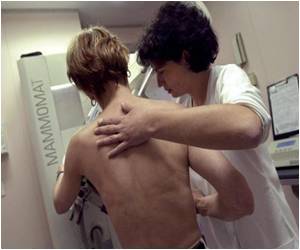In breast cancer patients, patient navigation services can reduce potentially dangerous delays in the identification of breast cancer, reveals study.

Hoffman led the analysis of "T1" data (time delay from suspicious finding to diagnostic resolution) as part of a team including Steven Patierno, Ph.D., principle investigator to the George Washington University (GW) arm of a National Cancer Institute-funded, national multicenter Patient Navigation Research Program (PNRP) and former executive director of the GW Cancer Institute. Additional analyses of this rich local and national data set are also underway. Patierno, formerly a professor in the GW School of Medicine and Health Sciences and SPHHS, is now the deputy director of the Duke Cancer Institute in North Carolina.
Previous research had suggested that navigation services can help women, especially low-income women, overcome obstacles that might result in long lags in diagnosis and treatment of breast cancer. Breast cancer kills more than 40,000 women every year in the United States and is a particular problem in the District of Columbia—a city that struggles with one of the highest breast cancer death rates in the nation.
Hoffman and the PNRP research team, which included seven other DC-based cancer health organizations, wondered if patient navigation might help address that burden in the nation's capital. To find out, the team studied 2,601 women who were evaluated at nine hospitals or clinics in the District of Columbia. All of the women had a breast lump, which raised the worry of cancer, and about half received navigation services. The remainder of the women got the standard advice to follow up on the lump but did not get the extra help that a patient navigator often provides, Hoffman said.
Navigators in the study were trained to deal with a lack of insurance, childcare difficulties and other barriers that can mean missed medical appointments and a delay in the provision of care. In some cases, women who do not get this extra help wait so long that a small and treatable cancer grows and becomes difficult, if not impossible, to stop.
The researchers discovered that patient navigation services shaved days off the time it took to get a diagnosis. For example, women in the navigated group had a mean diagnosis time for breast cancer of just 25 days. In contrast, women in the control group waited an average of 42 days to receive a diagnosis, a delay that slows down the next step—initiation of treatment: surgery, chemotherapy, radiation therapy or other treatments that can prevent the cancer from spreading.
Advertisement
"Navigators follow up with women and encourage them to go on for additional tests until they get an answer either one way or the other," Hoffman said, adding that many women feel overwhelmed or paralyzed by fear when they find a breast lump or get a mammogram with an abnormal result. "With help, many women are able to move forward to get the care they need," she said.
Advertisement
Hoffman, Patierno, and their colleagues published the study in the October issue of Cancer Epidemiology, Biomarkers & Prevention, a journal published by the American Association for Cancer Research. The authors say the study is limited to the District of Columbia and additional research is needed to determine if women in other cities or in rural areas will get a similar time edge when offered navigation services.
Source-Eurekalert















